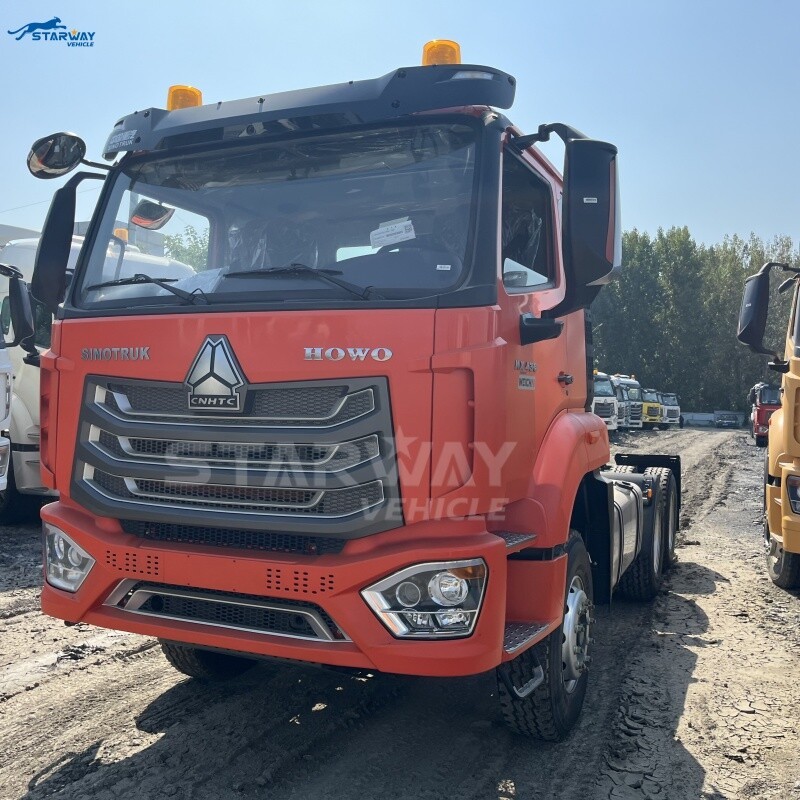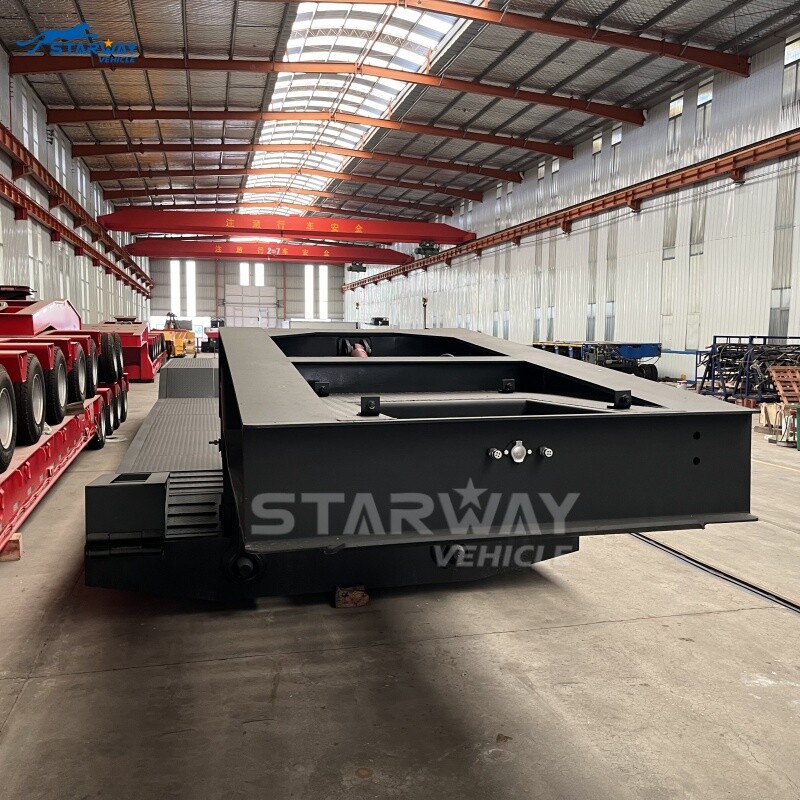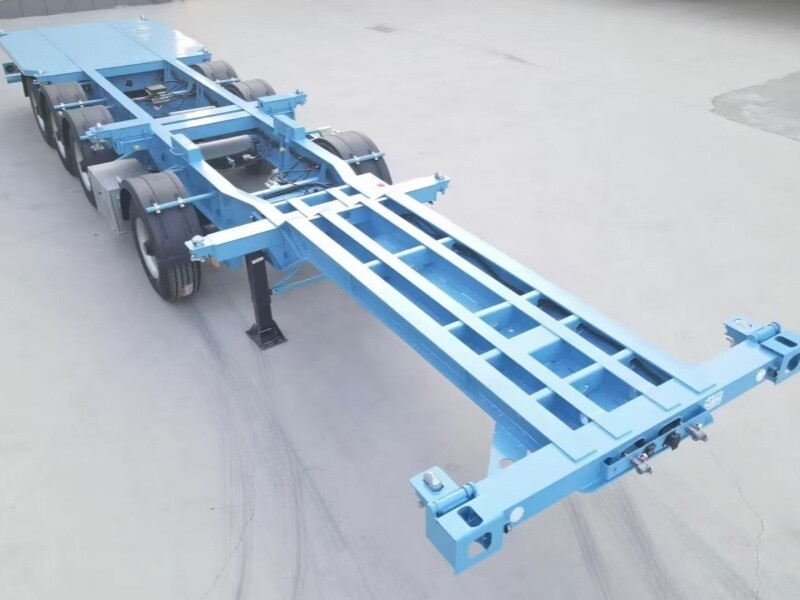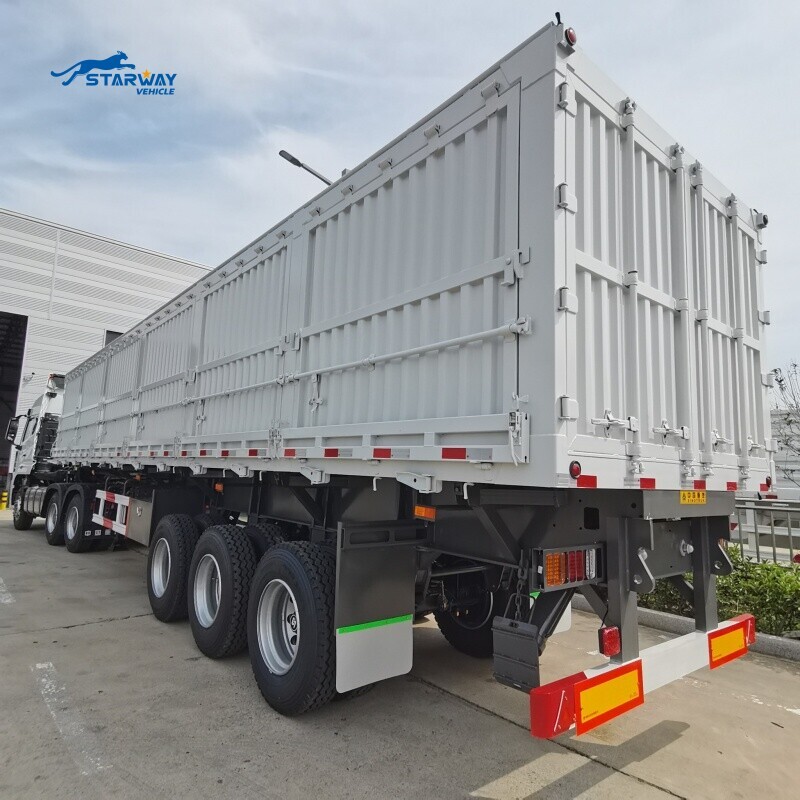Navigating the world of logistics and heavy-duty transportation requires a clear understanding of full trailers, semi-trailers, and tractor units. Each of these vehicles has distinct features and applications, making it essential to know their differences for optimized use. This guide breaks down their structures, characteristics, and purposes to help you choose the right equipment for your needs.
What's a full trailer ?
A full trailer is entirely self-supporting, equipped with front and rear axles. It doesn’t rely on another vehicle for balance and is frequently used for transporting large volumes of goods.
Axles: Two sets (front and rear) provide independent support for the trailer’s load.
Drawbar: Links the trailer to the towing vehicle, enhancing maneuverability.
Cargo Space: Large, making it ideal for bulky or heavy items.
Self-Supporting: Stands independently without needing a towing vehicle.
High Stability: Multiple axles enhance balance, even on turns.
Large Loading Capacity: Can carry heavier and bulkier goods.

A semi-trailer requires a tractor unit for support, as it lacks a front axle. Its reliance on the tractor’s fifth wheel gives it flexibility and efficiency, making it a staple in logistics.
Axles: Positioned at the rear.
Chassis: Built with high-strength steel or aluminum.
Cargo Area: Configurable as enclosed or open.
Dependent on Tractor Units: Requires support for movement.
Flexibility: Easily detachable and reattachable to different tractor units.
High Maneuverability: Suitable for tight urban spaces.

A tractor unit, often called a truck or prime mover, is a motorized vehicle that tows semi-trailers. It is the powerhouse of heavy cargo transportation, built for efficiency and durability.
Powerful Engine: Designed to tow significant loads.
Cab Design: Offers driver comfort, especially on long journeys.

Semi-trailers come in various designs to suit specific transport needs. Here are some widely used types:
1、Flatbed Trailers
Description: Open platform with no sides or roof.
Uses:Used for the transportation of various containers and bulk cargo
2、Skeleton Trailers
Description : Semi-trailer with container structure.
Uses : It is mainly used in logistics systems supporting ships, ports, routes, roads, tunnels and multimodal transport.
3、Fuel Tanker Trailers
Description : Cylindrical tanks.
Uses : Hauling liquids such as fuel or chemicals.
4、Dump Trailers
Description : The box adopts the side-over and rear-over self-unloading method
Uses : Mainly used for the transportation of bulk goods such as sand, soil, ore, coal, and building materials.
5、Lowboy Trailers
Description : Lowboy trailers for oversized equipment.
Uses : Heavy machinery and industrial transport.
6、Bulk Cement Powder Tanker
Description : Enclosed, protecting goods from the elements
Uses : For bulk cement transportation
7、Fence Trailers
Description : Fence structure design for semi-trailer
Uses : For transportation of agricultural and sideline products
8、Sidewall Trailers
Description : A semi-trailer with a railing structure in the cargo area
Uses : For medium to long distance transportation of medium to heavy and bulk cargo
9、Extendable Trailers
Uses: For exceptionally long cargo like beams.
Key Differences Between Full Trailers and Semi-Trailers
Leave A Reply





